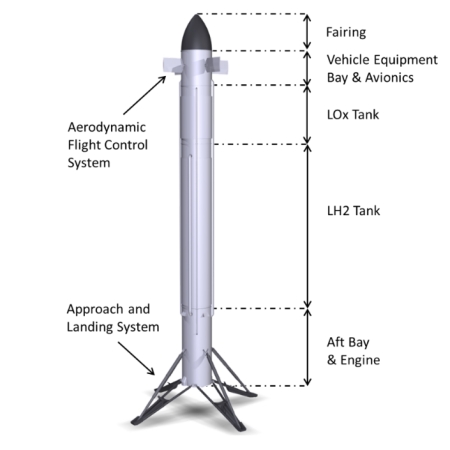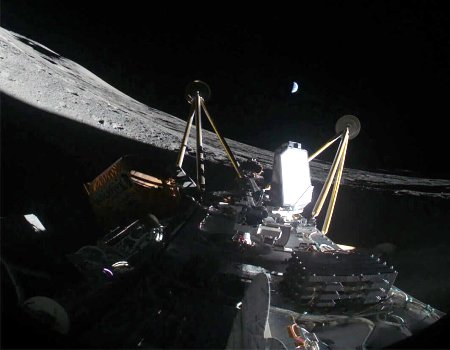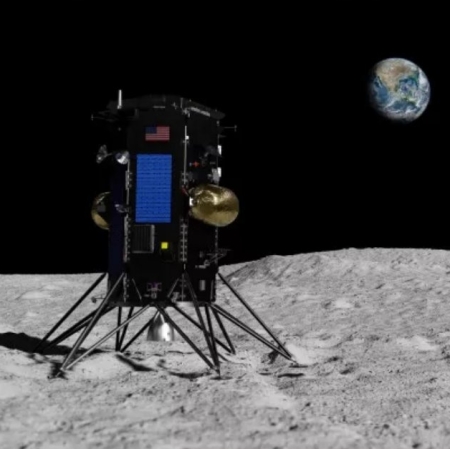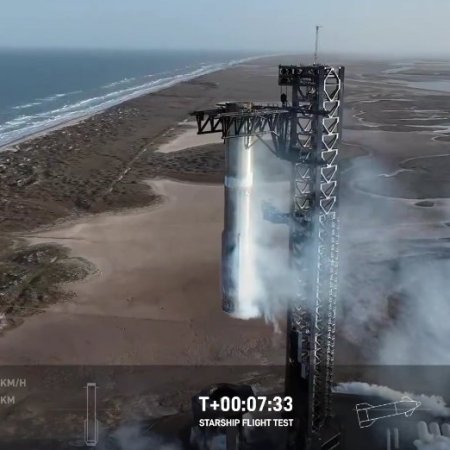SpaceX officials provide cause of loss Falcon 9 first stage after successful landing

The damaged Falcon 9 booster laying on its side
on its drone ship as it returns to port.
At a press conference yesterday, SpaceX officials outlined the results of its investigation into the loss of Falcon 9 first stage when it fell over on its drone ship shortly after a successful landing.
Speaking at a news conference following a flight readiness review for the Crew-10 mission to the International Space Station, Bill Gerstenmaier, vice president of Build and Flight Reliability at SpaceX, said about 85 seconds into the launch of the Starlink 12-20 mission, there was a fuel leak in the first stage booster, tail number B1086, and kerosene sprayed onto a hot component of the engine. He said that caused it to vaporize and become flammable.
Because there wasn’t enough oxygen to interact with the leaked fuel, it didn’t catch fire during the ascent, he said. But about 45 seconds after B1086 landed on their droneship, ‘Just Read the Instructions,’ there was enough oxygen available to get into the engine compartment and a fire broke out. “It subsequently blew out the barrel panel on the side of the rocket, just like it was designed to. The fire was all contained in the engine compartment,” Gerstenmaier said. “Even if we would’ve had a problem during ascent, this shows that the fire and the damage would be contained in just a single engine out, which still allows us to accomplish the entire mission.”
The company is still working to determine the cause of the leak itself.
Though the article and video at the link make a big deal about the FAA grounding SpaceX’s Falcon 9 fleet, the agency’s actions here were quite trivial compared to its behavior when Biden was president. It grounded the fleet for only a few days, while SpaceX did its initial investigation, and then immediately accepted the above conclusions from SpaceX and lifted the grounding, even though the company has not yet determined the leak’s cause.

The damaged Falcon 9 booster laying on its side
on its drone ship as it returns to port.
At a press conference yesterday, SpaceX officials outlined the results of its investigation into the loss of Falcon 9 first stage when it fell over on its drone ship shortly after a successful landing.
Speaking at a news conference following a flight readiness review for the Crew-10 mission to the International Space Station, Bill Gerstenmaier, vice president of Build and Flight Reliability at SpaceX, said about 85 seconds into the launch of the Starlink 12-20 mission, there was a fuel leak in the first stage booster, tail number B1086, and kerosene sprayed onto a hot component of the engine. He said that caused it to vaporize and become flammable.
Because there wasn’t enough oxygen to interact with the leaked fuel, it didn’t catch fire during the ascent, he said. But about 45 seconds after B1086 landed on their droneship, ‘Just Read the Instructions,’ there was enough oxygen available to get into the engine compartment and a fire broke out. “It subsequently blew out the barrel panel on the side of the rocket, just like it was designed to. The fire was all contained in the engine compartment,” Gerstenmaier said. “Even if we would’ve had a problem during ascent, this shows that the fire and the damage would be contained in just a single engine out, which still allows us to accomplish the entire mission.”
The company is still working to determine the cause of the leak itself.
Though the article and video at the link make a big deal about the FAA grounding SpaceX’s Falcon 9 fleet, the agency’s actions here were quite trivial compared to its behavior when Biden was president. It grounded the fleet for only a few days, while SpaceX did its initial investigation, and then immediately accepted the above conclusions from SpaceX and lifted the grounding, even though the company has not yet determined the leak’s cause.











